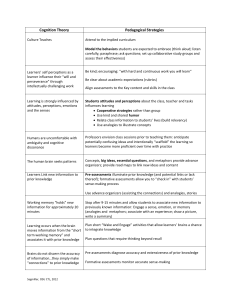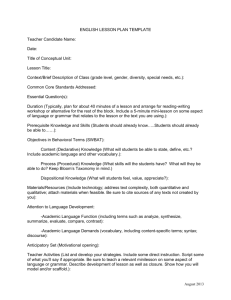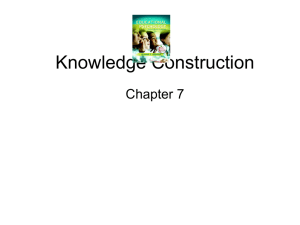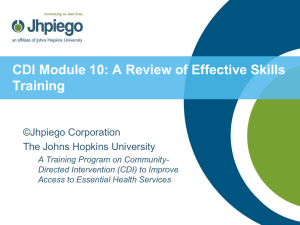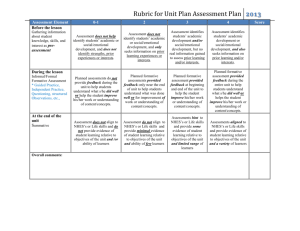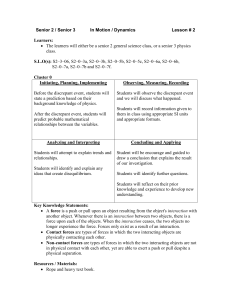Cognition and Learning - Oregon State University
advertisement
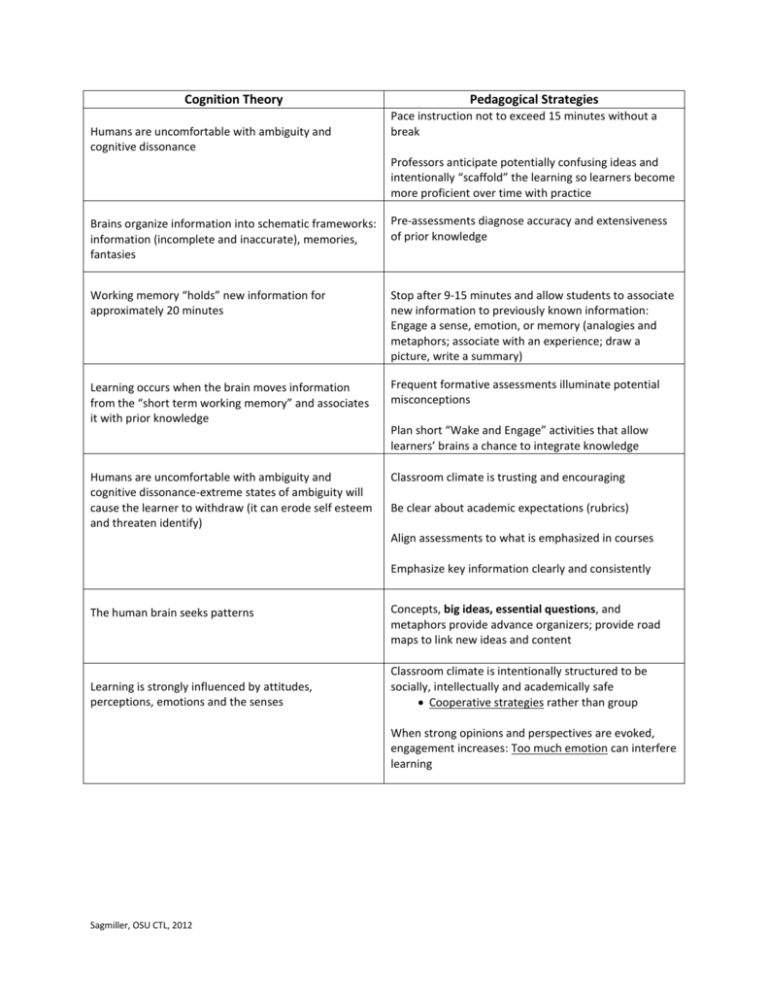
Cognition Theory Humans are uncomfortable with ambiguity and cognitive dissonance Pedagogical Strategies Pace instruction not to exceed 15 minutes without a break Professors anticipate potentially confusing ideas and intentionally “scaffold” the learning so learners become more proficient over time with practice Brains organize information into schematic frameworks: information (incomplete and inaccurate), memories, fantasies Pre-assessments diagnose accuracy and extensiveness of prior knowledge Working memory “holds” new information for approximately 20 minutes Stop after 9-15 minutes and allow students to associate new information to previously known information: Engage a sense, emotion, or memory (analogies and metaphors; associate with an experience; draw a picture, write a summary) Learning occurs when the brain moves information from the “short term working memory” and associates it with prior knowledge Frequent formative assessments illuminate potential misconceptions Humans are uncomfortable with ambiguity and cognitive dissonance-extreme states of ambiguity will cause the learner to withdraw (it can erode self esteem and threaten identify) Classroom climate is trusting and encouraging Plan short “Wake and Engage” activities that allow learners’ brains a chance to integrate knowledge Be clear about academic expectations (rubrics) Align assessments to what is emphasized in courses Emphasize key information clearly and consistently The human brain seeks patterns Learning is strongly influenced by attitudes, perceptions, emotions and the senses Concepts, big ideas, essential questions, and metaphors provide advance organizers; provide road maps to link new ideas and content Classroom climate is intentionally structured to be socially, intellectually and academically safe Cooperative strategies rather than group When strong opinions and perspectives are evoked, engagement increases: Too much emotion can interfere learning Sagmiller, OSU CTL, 2012 Human brains “trust” the practical world more than the abstract world Learners need multiple opportunities to challenge ideas: cooperative group work; performance-based learning experiences; experiments, reflections Diagnose students’ misconceptions through assessments to assist in the identification of misconceptions and inaccurate information Culture teaches: Community plays a central role in making meaning Create a learning climate conducive to learning: implied curriculum matters Personal and academic congruence: model behaviors students are expected to embrace (like thinking, patience, curiosity) Classroom climate influences students’ ability to consider new ways of “seeing” and knowing Understanding has degrees The continuous development of knowledge and skills must be intentionally incorporated into course and program design; embedded assessments, student reflections monitor development Intentional scaffolding of material assists learners construct learning over time: analyze where the points of difficulty are and pre-manage for these points in a course
